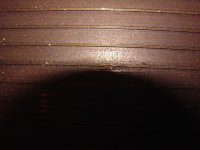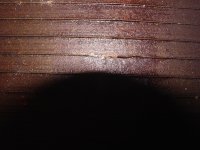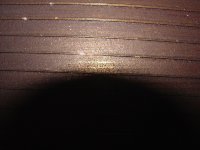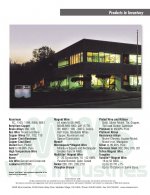Quick question:
Anyone know of a retail source for aluminum winding (magnet) wire?
I need to make new coils for my Magnepan Tympani 1D's and the 1B bass panels.
23-22awg. I do not yet know what the tweeter wire ga. is.
I may convert to Cu wire but will need to calc. the differences in resistivity and mass so as to not disturb the panel tuning (natural panel freq.).
But, the simplest is of course to replace same with ......
By the way how about a sticky (perm.) thread for our material sources?
Perhaps another for schematics & tech. resources?
Okay...back to lurker mode, and Thank you.
Rejoicings of the Season to All.
🙂
Anyone know of a retail source for aluminum winding (magnet) wire?
I need to make new coils for my Magnepan Tympani 1D's and the 1B bass panels.
23-22awg. I do not yet know what the tweeter wire ga. is.
I may convert to Cu wire but will need to calc. the differences in resistivity and mass so as to not disturb the panel tuning (natural panel freq.).
But, the simplest is of course to replace same with ......
By the way how about a sticky (perm.) thread for our material sources?
Perhaps another for schematics & tech. resources?
Okay...back to lurker mode, and Thank you.
Rejoicings of the Season to All.
🙂
I would post this in the speaker forum - there may even be people there who can help with some of the details needed to do this. I assume you are talking about the actual voice coil conductors on the diaphragms? I'm just wondering how they came to need to be replaced?
What...Why..How Come!
Why -> How come?
The need to replace the voice coils is due to the propensity of these wires to corrode. Almost a guaranteed requirement with these speakers (nothing to do with over driving, etc). If one has had them for more than 15 years... the odds are the coils will be corroded open.The "web" is full of folk who've experienced the need and some who've done the deed!
Just goes to show how one should enjoy what one has because it likely will not be there in the future. I'm just returning to my love of HF audio after 20+ years. These had not seen an amplifier signal in that time. Though they always were there and connected.😱
References for the curious and unbelieving:
Magnepan Mid/Bass Panel Repair Instructions - DavePride, February 01, 2001 at 17:34:10
Peter Gunn's Magnepan Voice Coil Repair Saga
Magnepan Rebuild
Okay............no more OT stuff over here.... Thank you for your indulgence.
kevinkr: I had "cross posted" there too. But us Tubies seem to have deeper resources and resourcefulness!!I would post this in the speaker forum - there may even be people there who can help with some of the details needed to do this. I assume you are talking about the actual voice coil conductors on the diaphragms? I'm just wondering how they came to need to be replaced?
Why -> How come?
The need to replace the voice coils is due to the propensity of these wires to corrode. Almost a guaranteed requirement with these speakers (nothing to do with over driving, etc). If one has had them for more than 15 years... the odds are the coils will be corroded open.The "web" is full of folk who've experienced the need and some who've done the deed!
Just goes to show how one should enjoy what one has because it likely will not be there in the future. I'm just returning to my love of HF audio after 20+ years. These had not seen an amplifier signal in that time. Though they always were there and connected.😱
References for the curious and unbelieving:
Magnepan Mid/Bass Panel Repair Instructions - DavePride, February 01, 2001 at 17:34:10
Peter Gunn's Magnepan Voice Coil Repair Saga
Magnepan Rebuild
Okay............no more OT stuff over here.... Thank you for your indulgence.
Attachments
Ouch, I can see why you need to replace the voice coil wiring. I'm wondering whether a polymer varnish insulated copper magnet wire might be better. You could possibly get away with a slightly smaller gauge due to copper's improved conductivity - and this might put you in a region where the added mass is not a big issue. (I'm also thinking the wire is only a small contributor to the overall diaphragm mass, and its effective air load?) Just a thought, possibly I'm all wet.. 😀
I guess these older panels are quite different from the 1.4 and 1.6QR I used to own. Mine were quite translucent.
I guess these older panels are quite different from the 1.4 and 1.6QR I used to own. Mine were quite translucent.
Last edited:
Ouch, I can see why you need to replace the voice coil wiring. I'm wondering whether a polymer varnish insulated copper magnet wire might be better. You could possibly get away with a slightly smaller gauge due to copper's improved conductivity - and this might put you in a region where the added mass is not a big issue. (I'm also thinking the wire is only a small contributor to the overall diaphragm mass, and its effective air load?) Just a thought, possibly I'm all wet.. 😀
I guess these older panels are quite different from the 1.4 and 1.6QR I used to own. Mine were quite translucent.
Kevinkr: You are thinking rather what Ive been mulling. Though AL magnet wire is avail. in all the same polyamide insulation families, with single, heavy, triple and quad build film thicknesses as well as temperature ratings; the fact remains that without very careful corrosion passivation BEFORE the insulation dip and cure cycles all the insulation coating accomplishes is to trap corrosion. Which as we know is reactivated or accelerates exfoliate grain growth (or other corrosion processes) with current flow and heat emission.
OOOooopps...my aircraft heritage is showing.😛 I used to work in a motor rewind shop (fractional hp up to 5000 hp) too. Longtime ago!!!
Now the likely reason AL wire stock was chosen was for the higher resistance per unit as lower weight per unit....which means lees wire length to achieve the desired 2 ohm per panel. As they are about 150.763 lineal feet of wire in that voice coil.
Anyway, I'm thinking that cross referencing the various resistance / ampacity / cross section area / weight per 1000' charts should give a set of "numbers" to work with. There are 5 doubled wire rows in the center of the panel....kind of like the "kicker" inner coil of many BIG woofers (Hartley, Altec, JBL...et al).. which also serve to bring up the total coil resistance.
One could with fair ease use 2 strands of Cu triple build 200C wire: 1@ 34 awg., and 1@ 29 awg ...........then use 2 additional strands of 34 awg. for the center doubled loops. I think the total weight could be very close.
Just off the cuff scribblings....I still have to dig into the reactance stuff yet. Oh yeah...what you saw was 1 of 8 panels I have to do!!!
My system: Tympani 1D's mid range, Tympani 1B bass panels, custom stand alone Sequerra ribbon tweeters, 4@ Quicksiver 60W 8417 mono blocks (mid & tweeters), Mark Levinson ML-9 (bass), J. Curl Vendetta Research low pass xo, custom passive mid -> treble.
Yes your Maggies did not have the sealer overcoat that my models require.
Remember the Tympani line were actually flagship models marketed under Audo Research Corp. That adhesive- sealant overcoat also is a resonant freq. tuning device to set the panel natural frequency - plus several strategically placed steel bits on the magnet frame to dampen diaphragm excursion.
Golly.... They are going to throw me out of this forum
I did not mean to get this far off topic. Moderator: I you think this needs to be pulled just send me a PM.
I apologize to all, I'll not trespass OT here again.
kevinkr PM me if you'd like... and 6BG6GA if you see this I would really like to talk to you Please PM too!!

I can ask SY or one of the other moderators to move this to a more appropriate venue. (Or merge it with the thread on the speaker forum) I don't think it is too big a deal, but it is definitely way off topic.. I am interested, feel free to PM me if you would like.
😀
Edit: I've emailed SY, hopefully he'll be able to move the thread when he has a spare moment.
This is a worthwhile discussion for anyone who owns older Maggies IMHO. (And I am curious having owned a couple of pairs, although I am no longer in the fold..) 😀
😀
Edit: I've emailed SY, hopefully he'll be able to move the thread when he has a spare moment.
This is a worthwhile discussion for anyone who owns older Maggies IMHO. (And I am curious having owned a couple of pairs, although I am no longer in the fold..) 😀
Last edited:
Ouch, I can see why you need to replace the voice coil wiring. I'm wondering whether a polymer varnish insulated copper magnet wire might be better. You could possibly get away with a slightly smaller gauge due to copper's improved conductivity - and this might put you in a region where the added mass is not a big issue. (I'm also thinking the wire is only a small contributor to the overall diaphragm mass, and its effective air load?) Just a thought, possibly I'm all wet.. 😀
I guess these older panels are quite different from the 1.4 and 1.6QR I used to own. Mine were quite translucent.
Yeah, you're soaked 😉
Having had to do the math lately, due to a FR driver build, I can trust you the information, that copper can't get even close to aluminum, when it comes to "weight to conductivity" ratio. If the driver is built with aluminum wire, better keep it that way.
Magura 🙂
Yeah, you're soaked 😉
Having had to do the math lately, due to a FR driver build, I can trust you the information, that copper can't get even close to aluminum, when it comes to "weight to conductivity" ratio. If the driver is built with aluminum wire, better keep it that way.
Magura 🙂
That isn't particularly good news, but it is believable. The original wire apparently corroded to death while the system sat unused..
Seems like replacing the voice coils on these things is going to be a huge amount of work.. I think Tympani1D must be a lot more patient than I am.. 😛
The end result with some care and good luck should be pretty good for the effort I hope.
I imagine Magnepan still repairs these, but I wonder at just how prohibitive a cost?
But really, just go buy some aluminum magnet wire.
What diameter is the wire in question?
Magura 🙂
What diameter is the wire in question?
Magura 🙂
Well, really that is exactly what I'm trying to do.But really, just go buy some aluminum magnet wire.
What diameter is the wire in question?
Magura 🙂
However thus far unable to locate a retail source.
23-22 awg.
kevinkr: Thank you for having the thread moved.
Yes, i could just give Magnepan the money for their wire kits... but I'd much prefer to buy a whole 11lb. spool in case I have several
"senior" moments or similar.
Now if I really knew what I was doing one could simply use 1.5 mil Doculam polyester ("mylar") laminating film, layout the conductor pattern, lay a second sheet (frosted side to frosted side -meaning adhesive sides toward each other) of 1.5 mil (or what ever as there are quite a few grades avail.), make a pair of .010" thick poster board slip sheets. Place the mylar & wire sandwich between the slip sheets and run them through the office type sheet laminator. Permanently sealed.... but then we get to the whole resonant tuning thing. I do not know the diaphragm thickness of that Magnepan used on these. But it can be done I worked with someone who did exactly that when he began annoyed with his stacked Dalquist (spelling?) arrays.
He eventually built 7 foot x 2.250" wide ribbon tweeters that were built into his library book shelves.
Anyway, you folk here have vastly more knowledge than I. So for the moment I'll stick to restoring the Tympani's rather than jumping into drown.
Thank you, all
and
All the finest of the Season.
When I got the aluminum wire from Magnepan for repairing the mid range on my MG3A there was enough to do 2 speakers several times over.If you need more than that you can get aluminum wire from a welding supply store.Don't try and replace the aluminum wire with copper wire ,it doesn't have the correct impedance ( way too low)
Andrew
Andrew
I did not think welding wire was insulated as magnet wire?When I got the aluminum wire from Magnepan for repairing the mid range on my MG3A there was enough to do 2 speakers several times over.If you need more than that you can get aluminum wire from a welding supply store.Don't try and replace the aluminum wire with copper wire ,it doesn't have the correct impedance ( way too low)
Andrew
Or do I misunderstand?
Okay, got it ordered.
Copper Wire Manufacturer, Specialty Wire Manufacturer
23 awg. Heavy build polyester 180C 5# or 10# spool.
They were very easy to talk with, equally willing to share technical information, suggest options, and locate what they have not got in stock. Sales to anyone, CC payment, etc...
So a resource to keep someplace in a sticky thread.... at least for us in USA and CA. though they will and do ship anywhere.
Thank you everyone.
Copper Wire Manufacturer, Specialty Wire Manufacturer
23 awg. Heavy build polyester 180C 5# or 10# spool.
They were very easy to talk with, equally willing to share technical information, suggest options, and locate what they have not got in stock. Sales to anyone, CC payment, etc...
So a resource to keep someplace in a sticky thread.... at least for us in USA and CA. though they will and do ship anywhere.
Thank you everyone.
Attachments
Last edited:
The wire that magnepan uses on its bass and midrange panels panels is uninsulated aluminum wire .They use aluminum because that is the only way they can get acceptable resistance for each run of wire. It doesn't need to be insulated because it is resting on a layer of Mylar and it is then coated with contact cement to get it to adhere to the Mylar.
Andrew
Andrew
The wire that magnepan uses on its bass and midrange panels panels is uninsulated aluminum wire.
Andrew
I'm not sure you are correct there, Andrew.
Having had to relay a mid panel of my IIIas last year, I observed that it was insulated - ie. it had a coating of some sort ... possibly merely anodising?
Anyhow, when cleaning the ends of the wires with sandpaper, in order to solder them to the solder-pads on the driver-frame, below the mylar (to connect them to the wires going off to the binding posts), the wire was a different colour when I had scraped off the coating ... and I was able to get a reading of the resistance of the loop, on my meter
Regards,
Andy
Well, really that is exactly what I'm trying to do.
However thus far unable to locate a retail source.
23-22 awg.
kevinkr: Thank you for having the thread moved.
Yes, i could just give Magnepan the money for their wire kits... but I'd much prefer to buy a whole 11lb. spool in case I have several
"senior" moments or similar.
Now if I really knew what I was doing one could simply use 1.5 mil Doculam polyester ("mylar") laminating film, layout the conductor pattern, lay a second sheet (frosted side to frosted side -meaning adhesive sides toward each other) of 1.5 mil (or what ever as there are quite a few grades avail.), make a pair of .010" thick poster board slip sheets. Place the mylar & wire sandwich between the slip sheets and run them through the office type sheet laminator. Permanently sealed.... but then we get to the whole resonant tuning thing. I do not know the diaphragm thickness of that Magnepan used on these. But it can be done I worked with someone who did exactly that when he began annoyed with his stacked Dalquist (spelling?) arrays.
He eventually built 7 foot x 2.250" wide ribbon tweeters that were built into his library book shelves.
Anyway, you folk here have vastly more knowledge than I. So for the moment I'll stick to restoring the Tympani's rather than jumping into drown.
Thank you, all
and
All the finest of the Season.
I think the links you've posted and the comments you've made indicate you are pretty well up to the task, just take your time.
I am not at all certain this wire is suitable, and you might still want to consider getting it from Magnepan, but this is interesting:
Film Insulated Nysol
I'm not sure you are correct there, Andrew.
Having had to relay a mid panel of my IIIas last year, I observed that it was insulated - ie. it had a coating of some sort ... possibly merely anodising?
I may be incorrect😱. It could be just aluminum oxide from exposure to the air.On my MG3as the wire had oxidized so badly in spots there were multiple breaks , all that was left was a powder at the break point .But like I said I may be FOS😀
But like I said I may be FOS😀
Well ... you are a Canuck, after all! 😛
Regards,
Andy
I may be incorrect😱. It could be just aluminum oxide from exposure to the air.On my MG3as the wire had oxidized so badly in spots there were multiple breaks , all that was left was a powder at the break point .But like I said I may be FOS😀
I believe it is insulated, uncoated aluminum wire corrodes very quickly. The coating however is not continuous (due to defects) allowing air and other corrosive agents contact with the aluminum.. The aluminum itself may already be corroding when the coating is applied which may also contribute to the problem. The stuff oxidizes readily in air, and with stronger oxidizers is a major constituent of solid rocket fuel (right after the oxidizer) used in the Space Shuttle amongst other things. http://stason.org/TULARC/science-engineering/space/56-Solid-rocket-booster-fuel-composition.html
Last edited:
- Status
- Not open for further replies.
- Home
- Loudspeakers
- Planars & Exotics
- OT: Aluminum Magnet (Winding) Wire source - retail?




